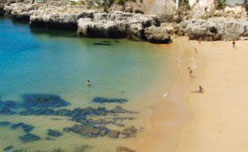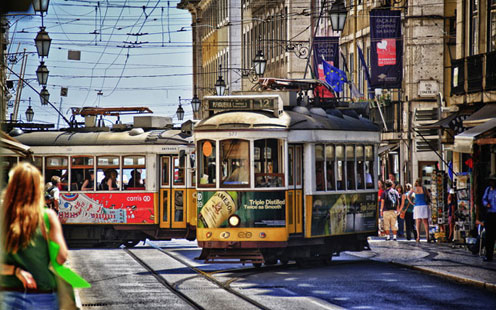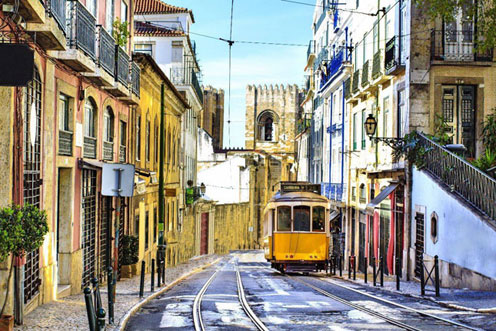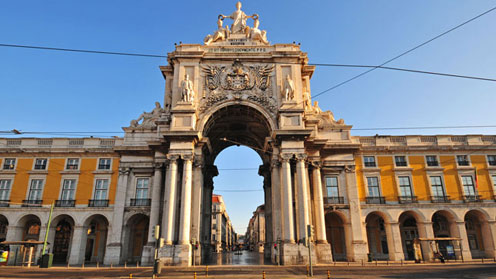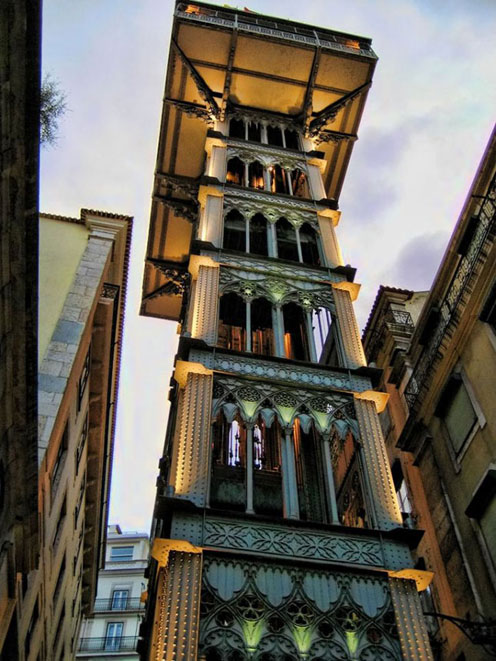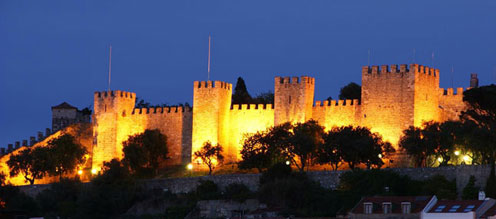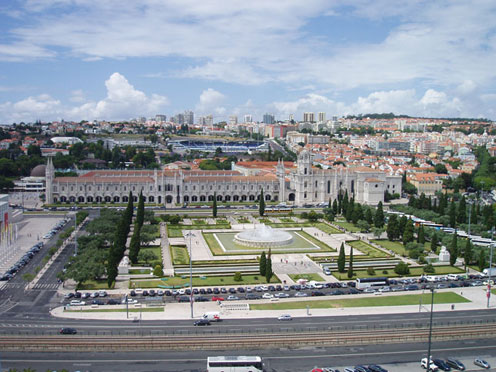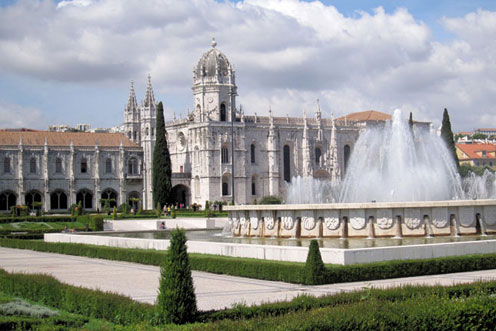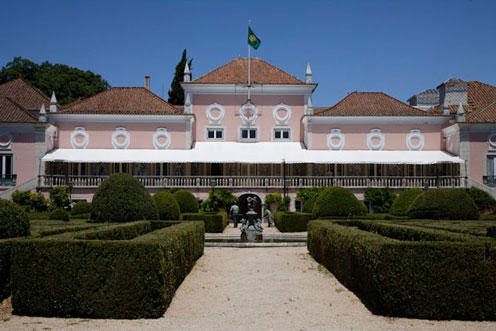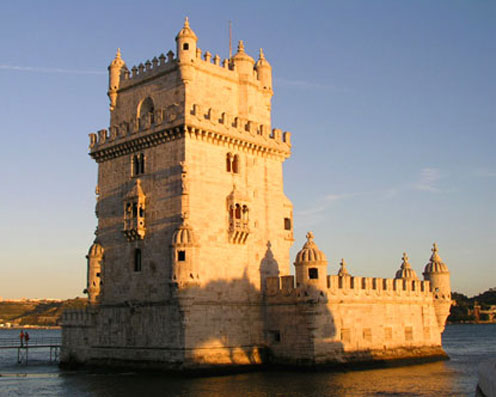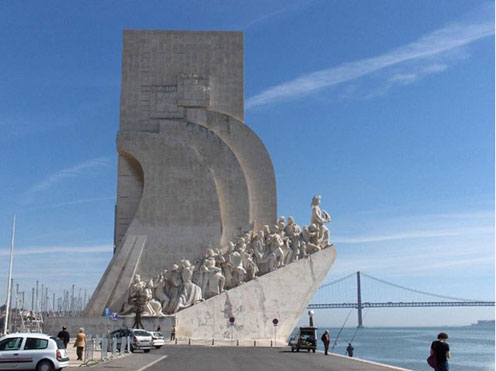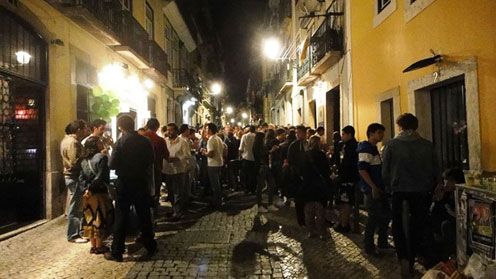Lisbon autumn holiday guide
Enjoy your autumn holiday in Lisbon.
Lisbon invites to a great vacation in the autumn – a great combination of big-city-vacation and beach holiday.
Travelling to Lisbon in the autumn? You should differently try roasted chestnuts which is a specialty in Portugal and only available in the autumn.
Learn how to kitesurf, windsurf and try paddle boarding in the perfect waves at the beaches in Portugal, Lisbon area.
Surfing in autumn
Join a surfing event during your holiday in Portugal in the autumn.
In Portugal, surfing is a 365 days a year activity. There are waves for everybody’s level – beginners to professionals.
During September, October and November there are several surfing events. The surfing events take place at Carcavelos and Guincho that are close to Cascais and Supertubos in Peniche.
Watch some of the world’s top professional surfing competition in the Lisbon area.
Lisbon offers a wide spectrum of sights there are available each day of the year.
Enjoy Lisbon from a different perspective
Allegedly Lisbon is one of the world’s most beautiful larger cities. But if you take a closer look and venture outside the touristy areas, you will see Lisbon from a different perspective.
The city is filled with sharp contrasts. At first sight you will notice the beautiful hotels that rising as high as the eye can reach, and next to them a ramshackle building which belongs to a slum district. Here is where the locals live.
It is very interesting to stroll down the narrow, tortuous streets and experience the special atmosphere and observe the everyday life of the Portuguese capital.
Trams in Lisbon
It rattles and clatters when its pass round the corner and here it comes – straight out of an old movie. The tram.
The trams are Lisbon’s landmark as the Eiffel Tower is in Paris. When you jump on a tram you will be a part of a journey though some of the major attractions in Lisbon. A squeal from the tram indicates a break and a large crowd of people will swarm until the tram is crammed with locals and tourists. The rumbling tram takes you through the narrow and back streets, between the lopsided houses where the laundry flicks from the balconies.
The trams are an ideal and the most efficient way to be transported in Lisbon historic quarters – and it is not a secret for the pickpockets either, so take care of your personal belongings while you are on vacation in Lisbon – especially in the peak seasons as summer and autumn.
The trams have been the most popular vehicles in the street of Lisbon since 1873 where the first horse-drawn tram was introduced. Since 1901 all Lisbon trams are electric.
There were 27 lines in mid-1950th – only five of those lines remain operational today.
Arco da Rua Augusta – the triumphal arch in Lisbon
At Praca do Comercio which is among Europe’s largest spaces, you will find Arco da Rua Augusta.
Pay a visit to the triumphal arch in Lisbon and learn about its history – from the first stone laid after the earthquake in Lisbon 1755 to the finished building in 1875. Take the elevator and admire the beautiful view over Praca do Comercio, Baixa and Sé cathedral.
Be seduced by Celestin Anatole Camels’s schulpture and other historic personalities such as Vasco da Gama which was created by Victor Bastos.
Praca do Comercio is surrounded by palaces on three of the sides and the forth side slope to the Rio Tejo. At the river there will typical be live music and people enjoying a cold beer or a refreshing ice cream on the ‘stairs’ that leads to Rio Tejo. In the middle of Praca do Comercio raises the statue of Kong José 1.
Lisbon viewpoints
If you are exploring Lisbon on foot you will notice the many hills in the city’s layout. Lisbon is built on seven hills which – besides giving you sore feet and calves – will provide plentiful opportunities to admire stunning views.
Elevador de Santa Justa
Spare your poor calves and take 32 meters closer to the sky in a few seconds with the elevator in the heart of Lisbon.
When you reach the top please your eyes with the panorama over Rio Tejo and the Baixa district’s roofs.
This distinctive landmark was built by Raul Mesnier du Ponard, a student of the world famous tower constructor Gustaave Eiffel, who is the man behind the Eiffeltower in Paris. Find the elevator at Rua da Ouro/Rua do Carmo.
Castelo de Sao Jorge
If you are visiting Castelo de Sao Jorge, you will observe the most stunning view. If you are looking for great views, a trip up to Castelo Sao Jorge (St. George’s Castle) will not disappoint you.
Admire the River Tagus (Tejo in Portuguese), the Christ the King sculpture and the 25 Abril Bridge, which resembles greatly the iconic Golden Gate Bridge of San Francisco.
Belem – what to see in Belem
In the charming Lisbon’s district of Belem you find a wide spectrum of historic monuments and cultural attractions. The sights in Belem include museums, convents, beautiful parks and an art and culture center. If you are travelling to Lisbon, Belem is definitely worth seeing!
Jerónimos Monastery Belem
Jerónimos Monastery is also called Hieronymites Monastery and Mosteiro dos Jerominos in Portuguese.
It is a great example of the local Manuelino architectonic style developed during Portugal’s glory days in the 15th and 16th centuries.
The monastery complex includes decorated Gothic monastery houses convent buildings, several royal tombs, sarcophagus and a sumptuously ornamented church.
In the church you will find the sarcophagus of Vasco da Gama (1469-1524), who found the sea route south by Africa to India back in 1498 with Henry the Navigator. Jerominos was built in 1502 by King Manuel I. The address is Praca do Imperio.
Presidential Palace Belem – the Pink Palace
During your holiday in Lisbon you can also pay a visit to Palacio de Belem – presidential palace.
Palacio de Belem is also known under the name ‘The Pink Palace’ because of its pink front.
In former times the palace was the King’s residence. During the Lisbon earthquake of 1577 it was temporarily transformed into a hospital. Today Palacio de Belem is the seat of the Portuguese president.
Torre de Belem – Belem Tower
Within a stone’s throw from Jerónimos Monastery you will find Torre de Belem, translated to English ‘Belem Tower’.
Belem Tower is a conspicuous fortress which was a central part of the Lisbon defense. The area has a huge, historical importance and the exceptional military culture has sent the well-attend attraction Belem Tower on UNESCO’s world heritage list.
If you decide to enter the Belem Tower, make it to the top and appreciate the stunning view of the River Tagus emptying into the Atlantic Ocean and Belem’s riverside. The tower was built in 1515.
Padrao dos Descobrimentors – Monument of the Discoveries
A walk along the Tejo River will lead you to the Monument of the Discoveries (Padrao dos Descobrimentors).
On the side of the monument stand several of the Portuguese explorers, led by Infante D. Henrique (Henry the Navigator), who is considered the ‘father of the Portuguese Discoveries’. Henry the Navigator did not discover overseas lands himself. He organized and stimulated the expeditions which led to discovering them.
Credit to Henry the Navigator – after he died people started to sail south of Africa and found the sea route south by Africa to India.
Besides starting the exploring of the world, Henry the Navigator changed the map of the world by establishing a navigation school with the purpose of educating astronomers, shipbuilders and cartographers. Henry the Navigator was not a part of the expeditions.
He is one of the men behind Portugal’s imperium. The Monument of the Discoveries was built in 1960.
Pasteis de Belem
When you are visiting Lisbon, remember to try the famous cake pasteis de nata.
Pasteis de nata is the most eaten cake in Portugal and it is made with a secret recipe. Belem houses the famous bakery Pasteis de Belem, and you can taste the real cake with wonderful cream. Antiga Confeitaria de Belem is located at Rua de Belem 84-92.
Party in Lisbon – discos, clubs and bars
Are you one of the lucky ones that are going to Lisbon on vacation? Bairro Alto, Alcântara, Docas, EXPO-area and Pink Street are the answer to a great night out. Clubs, restaurants, bars and discos are not short-supply goods.
Alcântara/Santos is characteristic by its lively atmosphere and vast number of nightclubs, but there are also opportunities to enjoy a drink in more quite surroundings.
Bairro Alto/Chiadao is a hit among the majority of people. Here the streets change from restaurants and cafes at day into discos and bars at night.
In Docas (Doca de Santo Amaro), which is one of the most lively places to a night out in Lisbon, you will have a memorable night. Imagine a wide range of restaurants, bars, cafes and discos close to the beautiful Tejo River by the marina.
Expo area which is around 10 km away from the city centre is another alternative though it is easily accessed by public transportation – especially the metro. At Parque das Nacoes you will find several trendy bars, restaurants and a few discos close to the ocean and Oriente Station.
Rua Nova do Carvalho (Pink Street) was the forgotten area filled with grubby brothels and grumble side streets with strip clubs. But Pink Street got a make-over and is now a part of ‘the 12 Favorites Streets in Europe’ according to New York Times.
Back in 2011 the slum district transformed into hotels, apartments, cafes, stores, bars and restaurants and the street was painted pink which resulted in the name Pink Street.
Weather in Lisbon
With more than 3000 sunshine hours per year, you are almost guaranteed a sunny holiday in Lisbon if you are travelling in the spring, summer and fall.
Lisbon’s weather is affected by the Gulf Stream due to which the temperature rarely gets uncomfortably like it does in other larger cities on the same degree of longitude.
The yearly quantity of precipitation is 600 mm spaced over 100 days – primarily from October to March. The summer in Lisbon starts in the end of May. Here is the quantity of precipitation minimal; the number of sunshine hours and the temperature are increasing.
The weather in October in Lisbon is covered by comfortable temperatures with 8-9 days rainy days.
The average max temperature is 22 degrees and minimum 14 de degrees while the water temperature still invite to a day on the beach. If you want a combination of beach holiday and big-city holiday, Lisbon will be the ideal choice.

